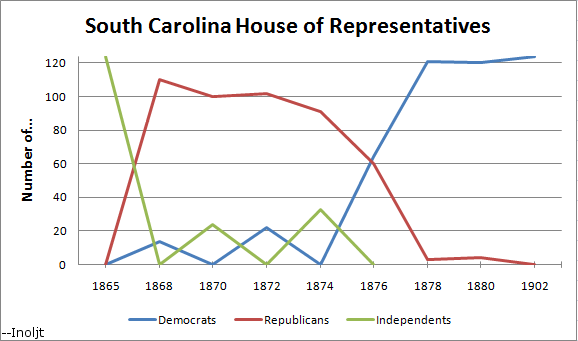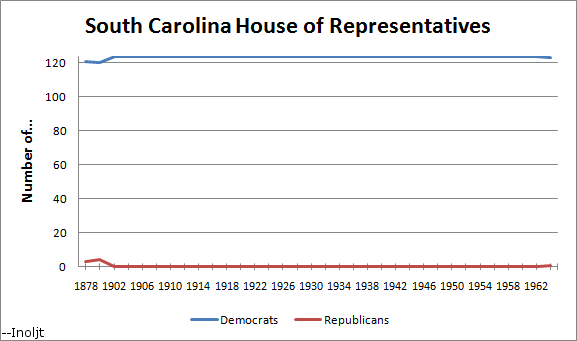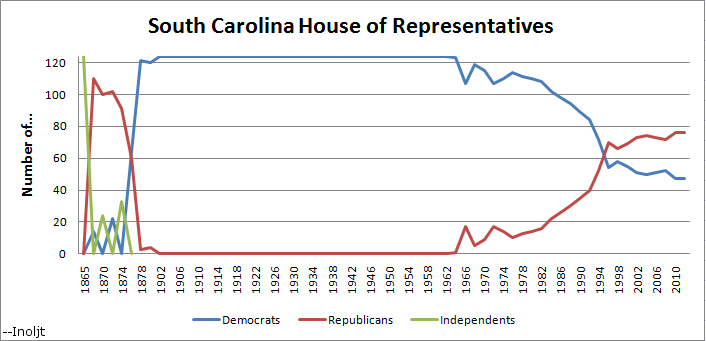• CA-Sen: We can probably rule out another Senate run by Chuck DeVore: he’s setting his sights lower… much, much lower. Chuck D is, in fact, forming an exploratory committee for Orange County’s Third District Board of Supervisors. An exploratory committee!
Somewhat related, yet another chart from Greg Giroux: The most recent Gov, Sen, and Pres numbers by CD in California, as well as key demographics highlights from the new census data.
• MA-Sen: And yet another Greg Giroux special. (If you’re not following this guy on Twitter, you are using Twitter wrong.) Alan Khazei (D) has formed a 527 exploratory committee “for a potential run for public office.” I’m not exactly clear, though, on why it’s a 527 rather than a normal FEC exploratory committee.
• MD-Sen: Remember when Dick Cheney ran the Republican operation to choose a vice presidential candidate in 2000… and picked himself? GOPer Eric Wargotz has managed to come up with an even more pathetic form of self-love: He’s created his own “Draft Eric Wargotz” page on Facebook. In case the name doesn’t ring a bell, he was 26-point roadkill for Barbara Mikulski last cycle, but now he wants the public to rapturously embrace a run against Maryland’s other Democratic senator, Ben Cardin. (By the way, this is my favorite comment so far.)
• ME-Sen: I meant to mention this in yesterday’s post on PPP’s poll, but in any event, state House Minority Leader Emily Cain (D), all of thirty years old and already on the verge of being term-limited out, isn’t ruling out a run against Olympia Snowe, but says it probably won’t happen. Even though she’s just barely eligible to run under the constitution, she’d has a bitchin’ campaign theme song just waiting to get rocked out.
• MO-Sen: I had a feeling things might wind up moving in this direction. Jan. 27:
However, the offices of Republican Reps. Blaine Luetkemeyer and Todd Akin told Roll Call that the Congressmen are not interested in running for the Senate.
Feb. 26:
“Some people want to draft me for Senate but you know engineers. It’s just one thing at a time,” said Akin, an engineer.
Mar. 9:
“I haven’t discounted it,” [Akin] told The Ballot Box on Tuesday night. “Some things you sort of put on your problem shelf and you know you’re going to deal with it at some time. It’s just one of those things that I’ve got to work through.
Todd Akin can’t resist the siren song of the Senate race – not with the field of damaged Republican B-listers gathering on the misty plains of Missouri. Just one question: Is “problem shelf” common engineer-speak, or is Akin just a special brand of dweeb?
As for this, it seems like classic Politico ginned-up b.s. So Claire McCaskill spends less taxpayer money on air travel than Kit Bond or Jim Talent, but because Politico makes a big deal out of her using a plane she co-owns with a group of investors, it becomes campaign fodder. Hopefully, with McCaskill saying she’ll reimburse Treasury for the costs, this’ll be a one-day story, unless Politico decides this move makes her look “guilty” (of what, I don’t know).
• NV-Sen: Rep. Shelley Berkley says she’s doing some polling right now and is still on track to make a decision in late spring/early summer. (I guess that’s somewhere between May 1 and August 1.) Berkley also reports that she’s been in contact with all the members of the B Team – Secretary of State Ross Miller, Attorney General Catherine Cortez Masto and State Treasurer Kate Marshall – and: “They all said the exact same thing, ‘We’re waiting on you, we love you and then we’ll make our decision.'”
• OH-Sen: Usually I ignore politicians when they comment on races – most of what they say is clueless or canned. But I love Ted Strickland, and you’ll love his incredulous reaction when he was asked what he thought of the possibility of GOP state Treasurer Josh Mandel challenging Sen. Sherrod Brown. Said Teddy Ballgame: “Give me a break, that is laughable. I don’t think that would be a contest at all.” And he went on from there – click through for the rest. (Incidentally, I came across this amusing tidbit thanks to the Google: Back in 2006, when running for state Rep., Mandel refused to say whether he was supporting Republican gubernatorial nominee Ken Blackwell – or, yeah, Ted Strickland.)
• WI-Sen: This is just so mega-weird I won’t bother trying to summarize:
When questioned about his reelection plans by National Journal Tuesday, 76-year-old Sen. Herb Kohl (D-Wis.) asked, “Am I running?” He then shrugged, wordlessly. Kohl then asked “are you are a reporter?” Told “yes,” he walked away without a word.
In response to further media inquiries, an undoubtedly groaning staffer said that Kohl “will announce his decision later this year” as to whether he’ll run again. What worries me the most, honestly, is DSCC chair Patty Murray’s response to questions about Wisconsin’s very senior senator: “Herb’s just great.” Really, this is the kind of thing a committee leader needs to be on top of. There are ways to evade questions (“I know Herb is still making up his mind”), and then there are ways to just look evasive – and this is the latter.
• WV-Sen: Yep, like I said, long two years.
• CT-Gov, CT-Sen: Quinnipiac has approvals for Gov. Dan Malloy (35-40), Sen. Joe Lieberman (38-45), Sen. Richard Blumenthal (49-25), Barack Obama (49-47). That last number in particular seems rather low to me. I wonder what Quinnipiac’s sample composition is… but they ain’t sharin’.
• ME-Gov: A Republican state senator proposed a state constitutional amendment which would institute gubernatorial run-offs if no candidate got a majority of the vote on election day (something that has happened in four of the the last five gov races). The bill would have a high hurdle to become law, though – two-thirds of the legislature would have to vote for it, and it would also have to go before voters.
• NJ-01: Rep. Rob Andrews, as though dipped in the cranberry bogs of the Pine Barrens, has renewed his soul and emerged as that unlikeliest of legislators: a Nancy Pelosi ally. Andrews was best known for dodgy behavior and fratricidal tendencies, but a period in the wilderness after his humiliation at the hands of Frank Lautenberg has apparently turned him into a better man. Read the article for the complete picture.
• NM-01: Former state Rep. Janice Arnold-Jones, who gave up her House seat in a failed bid for the GOP gubernatorial nomination last year, says she’s forming an exploratory committee to look at a challenge to Rep. Martin Heinrich. Heinrich is considering a run for Senate (something Arnold-Jones was also looking at), so she may have an opportunity for an open-seat run if that happens. Arnold-Jones staged an abortive bid for this seat the last time it was open, in 2008.
• NY-26: Good news! We finally have a date for the special election to replace ex-Rep. Chris Lee: May 24th. Even better news! Democrats are finally getting their act together and will be interviewing short-listed candidates this week and next. Those names: Erie County Clerk Kathy Hochul; Amherst town council member Mark Manna; former Amherst Town supervisor Satish Mohan; and Some Dudes Robert Stall, Martin Minemier, Jane Bauch, and Diana Voit. Meanwhile, teabagger David Bellavia says he’s still considering petitioning his way on to the ballot as an independent, but the clock is fast running down.
• Wisconsin Recall: So the Republicans running the rump of the Wisconsin state Senate managed to pass (or think they’ve passed) their union-busting measures without the need for a quorum. (Read the link for the full procedural run-down.) The lone no vote was Dale Schultz, who isn’t elligible for recall this year but does sit in one of the two-bluest districts held by a Republican, according to SSP’s now-seminal analysis.
• NY-St. Sen: The frogs get marched out one by one, hurrah, hurrah! The frogs get marched out one by one, hurrah – hurrah! Scumdog state Sen. Carl Kruger (D, sadly) just turned himself in to the FBI on corruption charges. Among Kruger’s many sins, he threatened to caucus with the Republicans in after the Democrats won back the chamber for the first time in generations back in 2008. He also voted against the gay marriage bill that came up late in 2009. Unfortunately, Kruger holds the second-reddest seat in the entire state (amazingly enough, though, it’s 45% Obama, thanks to the GOP’s awesome gerrymander). If he steps down, it’ll be an exceptionally difficult hold, though, since Dems control very few seats where Obama did worse than 60%.
• Maps: The Atlantic has a cool interactive map featuring the “12 States of America” – the US, broken up at the county level into varying socio-economic groupings (with cutesy names, of course).
• Special Elections: Johnny Longtorso is now contributing special election results wrap-ups:
In Arkansas HD-24, Republican Bruce Cozart emerged victorious by a 60-40 margin. Tennessee’s SD-18 was no surprise, with a 2-1 margin for Republican Kerry Roberts. In California’s AD-04, the lone Democrat, Dennis Campanale, made it into first place, albeit with only around 32%, and will face Republican Beth Gaines, who squeaked past fellow Republican John Allard by a 1% margin (22.5 to 21.5), in the May runoff. [The first CA race to feature a run-off under the new top-two system. – David]
Also, a quick shout-out to the newest member of the Tennessee House (HD-98), Democrat Antonio “2 Shay” Parkinson, and the newest member of the Virginia House of Delegates (HD-91), Republican Gordon Helsel, both of whom were unopposed on Tuesday.
• State Leges: Louis Jacobson of Governing magazine has an interesting look at various proposals in several states to shrink the sizes of their respective legislatures. However, if history is any guide, most of these won’t go anywhere.
Redistricting Roundup:
• New Jersey: Patrick Murray, the director of the Monmouth University Polling Institute, has put together a couple of proposed legislative maps, one that he calls a “constitutional” map, the other, a “competitive” map.
• Virginia: This seems like a pretty good deal, if you ask me:
Senate Majority Leader Richard “Dick” Saslaw said on a Northern Virginia radio show the other day that he had reached a “gentleman’s agreement” with Republican leaders in the House on how to go about redistricting the state….
“I’m not gonna interfere with the lines the House draws for the House,” he said. “And they’re not gonna interfere with the lines I draw for the Senate.”
Dems hold the Senate, and the GOP holds the House and the governor’s mansion, so I’ll take it.
• Wisconsin: Aaron Blake has another good entry in his redistricting series, though the bottom line is that even though Republicans control the process, they don’t have a great deal of ability to improve life for themselves. One thought that I had: If the recall effort in the WI Senate is successful, then Dems could suddenly give themselves a seat at the redistricting table where they had none before. Verrry interesting.




























